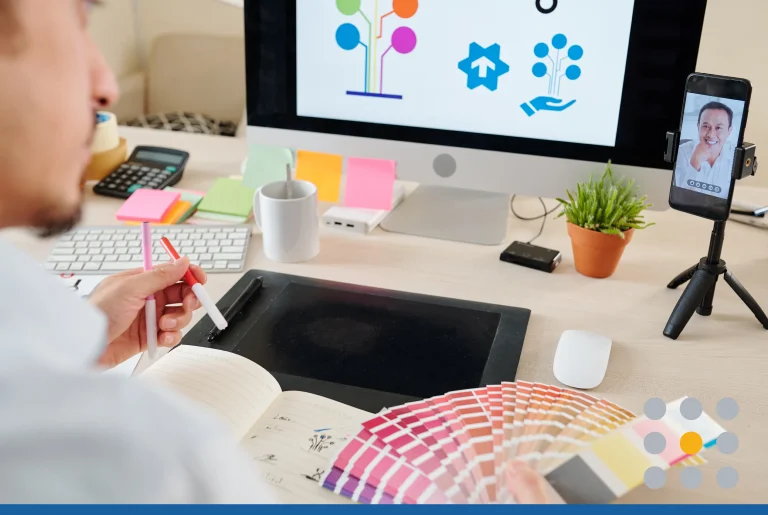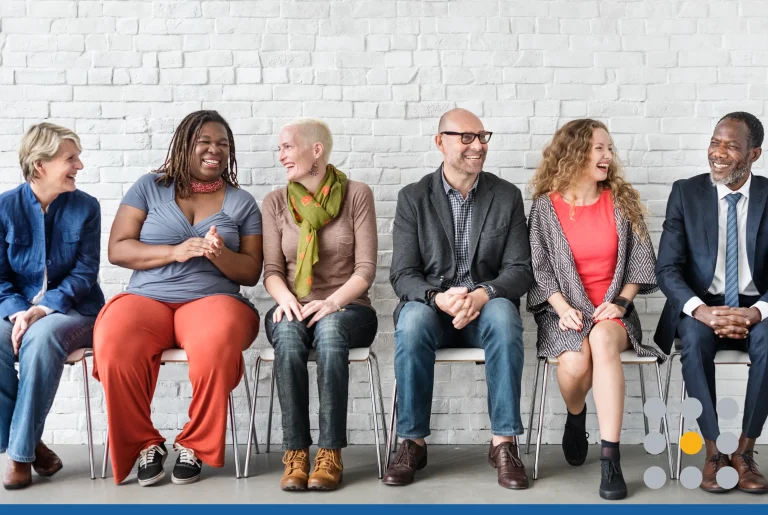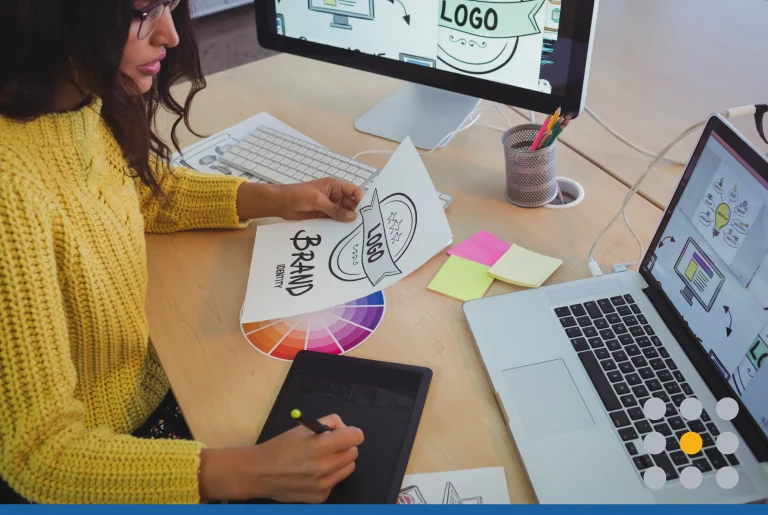As strange as it sounds, imitation goes hand in hand with creativity. Artists naturally look to other designers to see what works and what doesn’t, so all creative ideas borrow from the past.
By definition, an “original” concept is completely new and not derived from something else. Yet, every fresh idea is a compilation of the images and references you see in the world around you. How can anyone come up with truly unique logo designs when everything has been done before?
Copying Vs. Creativity
It’s okay to get inspiration from a trendy logo, but never smart to try and duplicate the essence of another brand. Plagiarism happens when you copy major elements of a logo design without changing how they visually interact.
Copying makes your business come across as a watered-down version of another brand. And when you present yourself as an imitator, consumers will assume your business offers less quality and innovation.
On the other hand, creativity is an ability to transform familiar elements to make them feel new. No matter how attractive it is, a logo only has value if it differentiates your business. As you mine the design world for ideas, aim to create a business logo that distinctly represents your brand.
Focus on the Design Choices, Not the Image
When you see a design you love, you’re really admiring how the artistic elements work together. You don’t want the same image. You want your logo’s aesthetic and visual impact to be as powerful as the source image.
To achieve this, look at the stylistic choices that make a great logo design special. What words come to mind when you look at the logo? What type of font and illustrative style did the designer use? What story does the logo tell? How do the shapes and colors relate to one another?
Picture the signature typeface in the Harry Potter logo. The quirky lettering captures the mystical, adventurous spirit of the story. The serif-style letters vary in height and width, and letters that appear more than once are never exactly the same.
There’s also no fixed baseline for the typography. As though floating, the individual letters freely ascend and descend above or below the baseline in unexpected ways. And of course, the letter “P” grabs attention with Harry’s signature lightning bolt integrated into the design.
Bottom line: A memorable logo design has a distinction. You will never confuse the Harry Potter typeface with another brand, even when it’s used to spell out unrelated words. Don’t look at great logos to copy them. Study their strong qualities to figure out how to make your own logo striking and unforgettable.
Diversify Your Source Materials
Don’t keep your eyes glued to one reference throughout the entire design process. The more you diversify your sources, the easier it is to avoid plagiarizing.
Even well-known brands are guilty of getting too much inspiration from established designs. In recent years, several brands have been called out for designs that are suspiciously similar to logos of defunct or foreign companies.
Stadt Bruhl (1971) vs. Beats by Dre (2008)
Frisol Oil (1981) vs. Flipboard (2010)
Honda Acura (1990) vs. Chang’an Auto Group (2010)
The best way to avoid this gray area is to look for inspiration in surprising places. Start by exploring styles outside your industry. It’s smart to know what your competitors are doing, but trying something new will help you differentiate your brand.
Everywhere you look, there are examples of creativity and design. Use sources such as architecture, mechanics, art movements, science, mythology, and fashion to brainstorm ideas. When you find concepts you like, choose reference materials that approach the topic from various angles. That way, you’ll always be working from diverse influences.
Sketch Without References
One of the most notable cases of creative infringement was the 2015 announcement of the Tokyo Olympics 2020 logo. Japanese designer Kenjiro Sano was accused of copying a logo created by Belgian designer Olivier Debie for the Theatre de Liege. The Olympic committee soon ditched the design amid allegations that Sano had plagiarized past work as well.
While Sano staunchly denied the plagiarism, there are strong reasons to doubt his claims. The most glaring evidence? Sano used the same typeface as the original design.
Having a reference in front of you while you sketch is an invitation to copy. Whether you create early drafts by hand or digital mockup, it’s a good idea to distance yourself from major source material.
It’s natural instinct to keep looking at the reference and “correcting” your design. Instead, keep your inspiration at the back of your mind and use freestyle sketching to come up with shapes and forms organically.
Put Ideas in a New Context
Unless you’re an alien from another planet, you experience much of the same sights, sounds, and sensations as everyone else. Your creativity is limited by what you know, observe, or imagine. Sometimes, your creative process will lead you down the same path as another designer, and that’s okay.
Context is everything. You can reinvent familiar imagery in a million different ways simply by changing the context of your story. Think about the similarities between two equally famous logos: Target and Captain America.
Target succeeded at taking ownership of an exceptionally common piece of imagery. The company has used variations of the red bullseye logo since 1962, with the current version debuting in 1980. Target didn’t invent the bullseye, and it wouldn’t automatically be copying to use one in your logo design.
Captain America’s legendary shield has appeared in comics since 1941. The design also sports the rings of a bullseye, but you can quickly tell these designs apart with one glance. Why? That’s right, context.
Target uses the two central rings of a bullseye in bright red that signals exciting deals and great value. The superhero logo is synonymous with patriotism and valor. From the bold star to the red, white, and blue color scheme, the shield captures classic American ideals. The context is completely different, which makes the shared imagery irrelevant.
If you’re worried your design doesn’t look original, change the big picture. How do the seperate elements complement each other? Can you add elements that bring a sense of action or depth to your design? Where can you incorporate colors or hidden elements that are visually engaging?
Embrace Criticism
Never consider a design to be finished until you’ve received feedback from objective viewers. The closer you are to the design, the harder it is to see its shortcomings. Get reliable feedback from peers who can compare your designs to source materials without bias and help you avoid plagiarism.
Even when copying is accidental, it tarnishes your credibility. Get your brand off to a positive start by putting ample effort into researching and creating unique logo designs.







